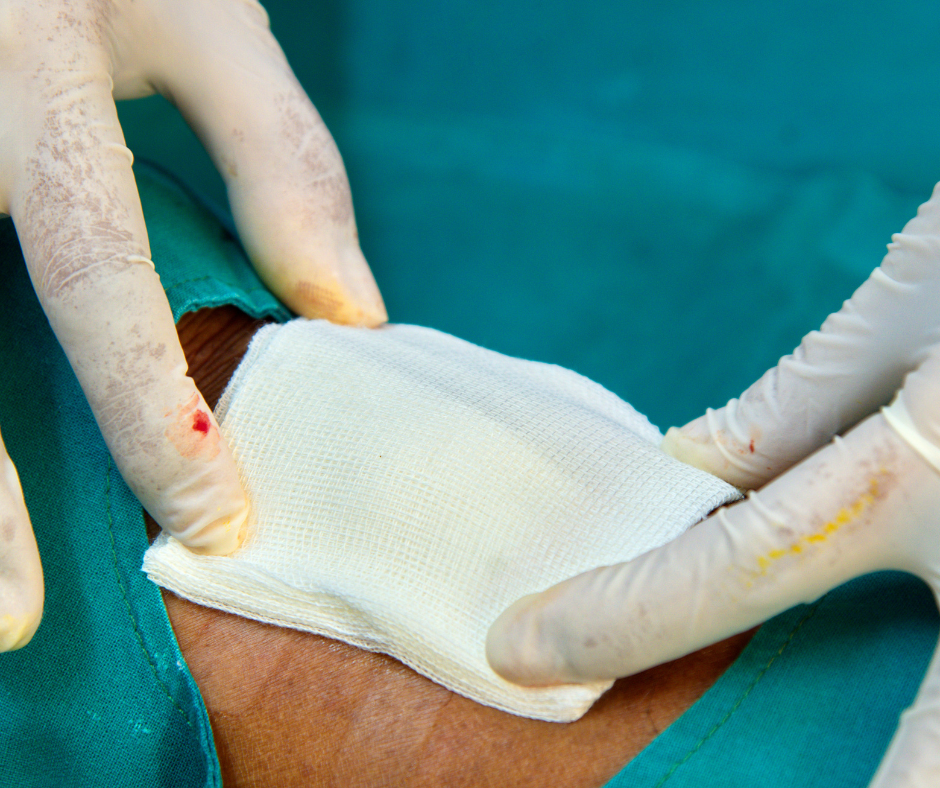Open Wounds: Classification and the Right Treatment
Open wounds can be superficial and limited to the outer layers of skin. In other cases, they are deeper, reaching the underlying tissues and organs. Thus, depending on the cause, site and depth, a wound can range from harmless to life-threatening. Learn more about the different types of open wounds, how to treat them right and when you should definitely see a doctor.
Unlike closed wounds, such as bruises or closed fractures, open wounds are injuries that involve a
break in the skin, leaving the internal tissue exposed. As the skin plays an important role in
protecting the organs, tissues, and other structures inside the body, a breach of the skin can
potentially cause infection. Falls, accidents with sharp objects, and car accidents are the most
common causes of open wounds.
Classification of open wounds
There are different kinds of open wounds:
Abrasions are usually the result of a rub or scrape on a rough surface. In most cases, falls are the cause of these injuries to the outer layer of the skin. Typically, an abrasion will not bleed heavily. However, the affected area should be thoroughly cleaned and washed to avoid infection. Minor
abrasions should heal on their own after cleaning. In more severe cases, abrasion may require a
bandage or dressing. Larger ones are best covered directly with a quick wound dressing or a sterile compress and treated by a doctor.
Punctures are hole-shaped wounds. They are usually caused by pointy objects such as needles and nails. Punctures may not bleed much, but these wounds can be deep enough to damage internal organs. If you have even a small puncture wound, visit your doctor to get a tetanus shot and prevent infection.
Lacerations are cuts, slices, or tears in the skin. They are one of the most common household
injuries. A small cut is best left to bleed briefly. Dirt and pathogens are flushed out of the wound in this way. Usually, lacerations have smooth wound edges that can be easily tucked together with a band-aid. That is why they usually heal well. Deep, prolonged or heavily bleeding lacerations should be treated by a doctor. If necessary, the wound must be glued or stitched.
An avulsion is a severe wound and can result in the partial or complete tear of the skin and tissues. It usually happens in violent accidents such as car crashes, explosions, and other incidents. Further to heavy bleeding, some cases of avulsions can lead to the loss or dislocation of limbs. Those emergency
cases have to be treated by a doctor immediately.
When to see a doctor
You can treat harmless, minor injuries that do not bleed too much yourself. In that case, do not touch
the wound. As a first aider, wear disposable gloves.
In the case of a serious accident, you should always seek immediate medical care. In general, you
should see a doctor if:
- an open wound is deeper than 1/2 inch,
- bleeding doesn’t stop with direct pressure,
- bleeding lasts longer than 20 minutes,
- bleeding is the result of a serious accident.
*This article is meant for educational and recreational purposes only. The content of this article expresses editorial opinion only, it is not meant to provide medical advice, fact, or to provide medical recommendations on how to treat disease.

